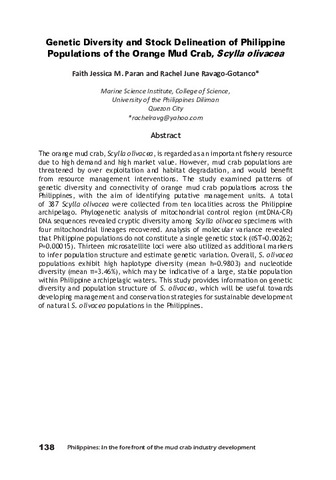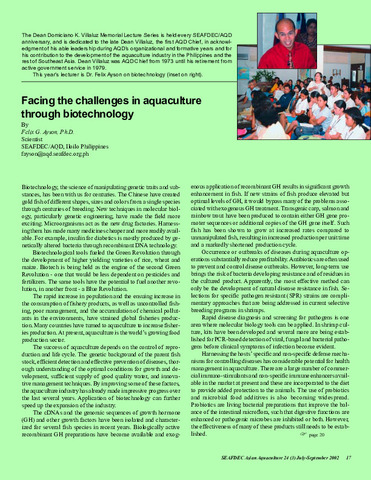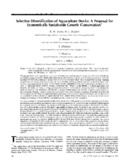A statistical procedure for using "reference fish" to compare the growth of genetic strains in aquaculture
Share
Abstract
No simple, well-accepted procedures exist for comparing the relative performance of genetic strains of fish in aquaculture environments. The major technical problem is providing adequate statistical replication of ponds or cages. Inclusion of an "internal reference" population of standard fish in each pond can reduce replicate error caused by variation in the physical environment, food supply and population density. This statistical procedure is feasible only if there is no biological interaction (interference competition) between the strain and the reference fish. An experimental design is described in which the replicates contain different proportions of reference fish relative to the test strains. This permits the effects of interstrain interference to be estimated. Data from growth of tilapia Oreochromis mossambicus in crowded aquaria are used to illustrate the effect of interference and other nonlinearities in the experimental design.
Subject
Collections
Related items
Showing items related by title, author, creator and subject.
-
Genetic diversity and stock delineation of Philippine populations of the orange mud crab, Scylla olivacea
Paran, Faith Jessica M.; Ravago-Gotanco, Rachel June (Aquaculture Department, Southeast Asian Fisheries Development Center, 2017)The orange mud crab, Scylla olivacea, is regarded as an important fishery resource due to high demand and high market value. However, mud crab populations are threatened by over exploitation and habitat degradation, and ... -
Facing the challenges in aquaculture through biotechnology
Ayson, Felix G. (Aquaculture Department, Southeast Asian Fisheries Development Center, 2002) -
Selective diversification of aquaculture stocks: A proposal for economically sustainable genetic conservation
Doyle, R. W.; Shackel, N. L.; Basiao, Zubaida; Uraiwan, S.; Matricia, T.; Talbot, A. J. (NRC Research Press, 1991)The genetic diversity of aquaculture stocks can be maintained, and their genetic impact on wild stocks minimized, by breeding programmes that deliberately generate genetic diversity. Current animal breeding practices are ...




